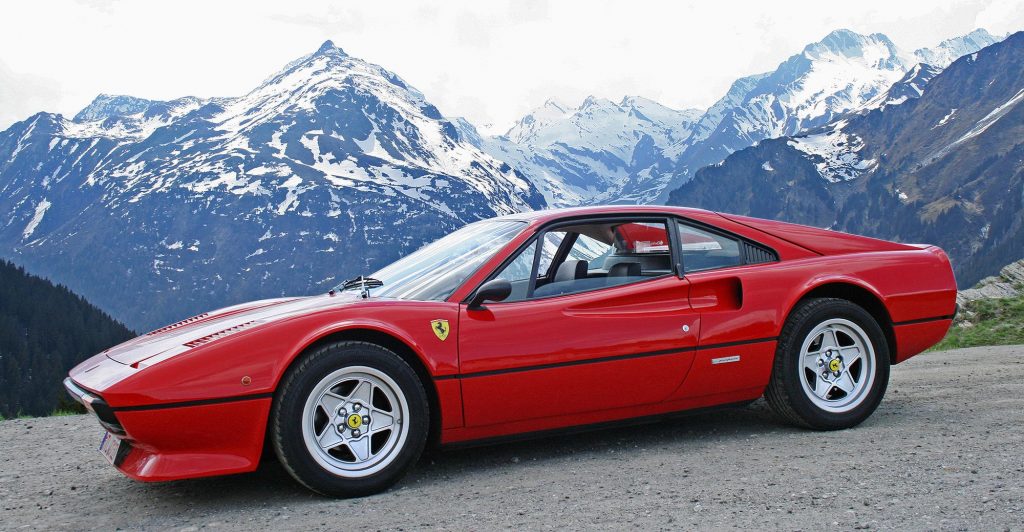Production
Numbers
Photo: © Bill Noon
Most Ferrari books say that the total number of carburetted 308 GTB’s produced between 1975 and 1980 is 2897. But on the occasion of the 30th anniversary of the 308 GTB the Ferrari Owners Site has published an article, which mentions the following production numbers:
308 GTB (Fiberglass) 1975 — 1977 808 (s/n 18677 — 21289)
308 GTB (Steel) 1977 — 1980 2185 (s/n 20805 — 34329)
308 GTS 1977 — 1980 3219 (s/n 22619 — 34501)
208 GTB 1980 — 1982 160 (s/n 31219 — 41329)
208 GTS 1980 — 1982 140 (s/n 31249 — 41265)
308 GTBi 1980 — 1982 494 (s/n 31327 — 43059)
308 GTSi 1980 — 1983 1743 (s/n 31309 — 43079)
308 GTB QV 1982 — 1985 748 (s/n 42809 — 59071)
308 GTS QV 1982 — 1985 3042 (s/n 41701 — 59265)
208 GTB Turbo 1981 — 1985 437 (s/n 41357 — 59277)
208 GTS Turbo 1982 — 1985 250 (s/n 42863 — 59279)
308 GTB Michelotto 1978 — 1985 15 (s/n 08380 — 31559)
This would mean a total of 2993 carburetted 308 GTB’s. To complete the confusion, another source from the UK, which also relies on factory figures, mentions the production of only 2721 308 GTB’s. The actual number of cars built will probably never be confirmed. I assume that – if at all – only the archives of Ferrari or Ferrari Classiche could be able to provide an answer.
Contrary to the table above, there are quite a number of steel-bodied cars known, with numbers lower than 20805 – especially US versions. According to this table, 34329 was the last caburetted 308 GTB. On the other hand, most of the literature says that the last carburetted 308 GTB built in 1980 was s/n 34349. But according to the Servizio Assistenza Tecnica of Ferrari, even after 34349 there were manufactured another five: 34377 – 34379 – 34389 – 34465 – 34503! As a result, the numbers in the table shown above seem rather questionable.
The early cars were built with lightweight fiberglass (vetroresina) bodies, from mid-1977 the bodies were made of steel. It is believed that the first 712 cars were fiberglass, the rest of 2185 cars had steel bodies. But the official factory number for fiberglass cars is 808. Another of the many Ferrari mysteries.
How can you distinguish a fiberglass car from a steel one, even if you don’t have a magnet handy? Fibreglass cars have a little seam at the top of the windscreen pillar, where it touches the roof. Further differences for the European version: The space for the rear license plate is plain, while steel cars have a hollow there. On glass cars, the rear driving lights are located in the bumper, while on steel cars they are in the centre of the indicator lenses.

Photo: © Norman Walther
